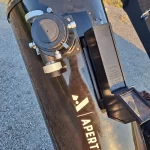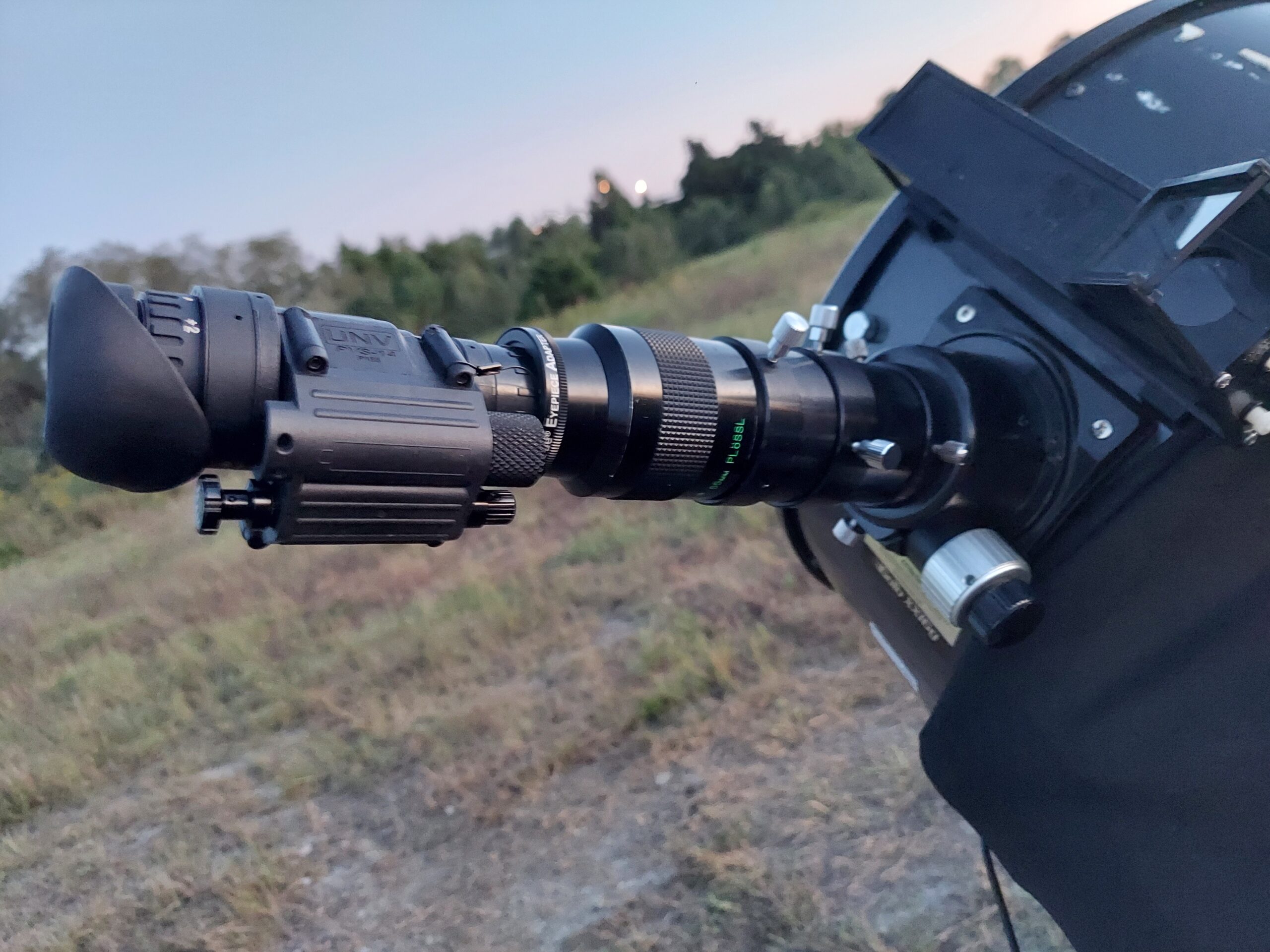Once you have played around with your plossl (the eyepieces that come with your telescope) you will want to start ordering a higher quality eyepiece. Plan to protect that investment by storing them properly.
Keep your eyepieces in a hard case lined with foam, store them in a place free of moisture with the dust caps on. Choose a case that comes with pluck foam and create individual spots for each eyepiece. Plan to use a hard case for your eyepieces even if you only ever plan to own two or three.
Companies like Pelican offer custom eyepiece cases for hundreds of dollars, but I grabbed mine from Harbor Freight for less than $100.
This is my case the Apache 4800.

The pluck foam is scored into small cubes that you can remove to make a custom indentation for each of your eyepieces.
I like to keep a small bulb syringe to blow dust off my mirror and out of my eyepieces, I have found this super useful. I grabbed mine at Dollar General.
I also keep my laser collimator in my case to use when observing.
After observing, be sure to open your case and let the eyepieces come back to the temperature where they are stored.
I like to keep the case open and prop them up slightly with the caps off. Otherwise, the moisture can encourage mold to grow on the coatings and ruin your investment.
Can I store telescope eyepieces in my garage?
Many Dobsonian telescope owners keep their telescopes in the garage and wheel them out onto the driveway to observe. (Some models come with wheelbarrow handles to make them easy to use in this way). This makes the garage the ideal place to store your eyepieces, but take appropriate precautions.
As a general rule, eyepieces need to be kept dry, but can withstand drastic temperature fluctuations. They are designed to be used outside, but can be damaged by dust, moisture and mold. Wherever you choose to store your eyepieces, be sure to check them regularly to be sure there is no accumulated moisture.
Store your eyepieces in a hard sided case that can seal out moisture. There are several available.
I chose the Apache 4800, it has a gasket seal that keeps the case water tight. I have even stood on the case when I was trying to view something close to the apex. It is a tough case.
Can I store telescope eyepieces outside?
While you may be able to store your telescope and eyepiece in the garage, I would not go so far as to store them outside.
My eyepieces cost between $70 – $300, it is important for me to protect that investment. You can see my protection set up with the Apache 4800, and I keep it inside in the spare bedroom.
If you have no place to keep your eyepieces inside, I would recommend keeping them in your car.
This is not ideal with all the jostling around, but they are built to withstand a wide variety of temperatures, but moisture will destroy them quickly.
Can I store telescope eyepieces in my car?
The best place to store your eyepieces is indoors in a hard sided case lined with foam, if you have no place to store them inside, they can be kept in your car, in a hard sided case. This should be a temperature storage solution.
Depending on the climate where you live the temperature in your car can rise above 150 degrees regularly.
Just to be sure I called Orion and asked their opinion, they agreed that as long as the eyepieces are stored in a hard side case the hot or cold should not affect them. So feel confident storing them in the car.
How do I keep my eyepieces from fogging up?
When observing in any conditions, fog in your eyepieces is frustrating and degrades your seeing. It can make the eyepiece unusable.
There are a bunch of options if you find your eyepieces fogging up.
I have a lens warmer that was very affordable and it has been helpful, but its not a perfect solution.
Active Dew Control
R-Sky, DewNot, and Thousand Oaks all sell versions of eyepiece warmers that are specifically designed for use with telescopes.
These are a great investment to keep your eyepieces functioning in humid conditions.
Towel
A friend of mine swears by laying her eyepiece on a towel when not in use.
This keeps them free of moisture.
Hair Dryer
I have not tried this, but I am anxious to get a small hair dryer that I can use in the field to warm and dry my eyepiece when not in use.
This seems to solve both the problem of temperature and moisture, and I have seen many fellow astronomers recommend it, but I have so many little pieces of gear that I have not added this tool to my setup.
Dust Caps
A Canadian astronomer likes to simply keep the dust caps on his eyepieces when they are not in use.
I do wonder if this works for him because of his climate. I live and observe in a very humid area in the American South.
Give It a Break
If you have been observing for some time, and you start to notice fog in the eyepiece, switch it out for another one.
Set it to the side, and let it come back to ambient temperature. This works some of the time, but sometimes it does not.
For a deeper conversation about telescopes and temperature check out this guide on acclimation.
Cooler with Hot Hands and O2 Absorber
One night, I was so frustrated by the humidity interfering with my observing that I got a cooler out and lined it with a towel.
I added a few activated hot hands to the cooler to create a kind of warmer, but it allowed in humidity and did not work. I wrote up the whole experiment in this post.
I think this solution could work if I had added an Oxygen absorber or moisture absorber to keep the box dry.






